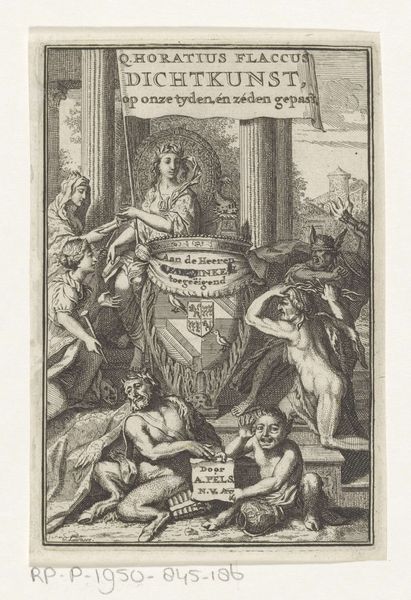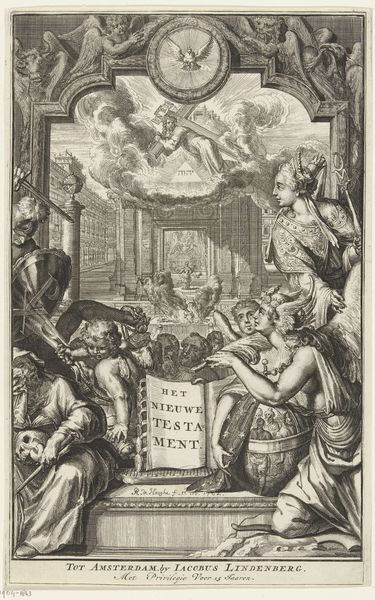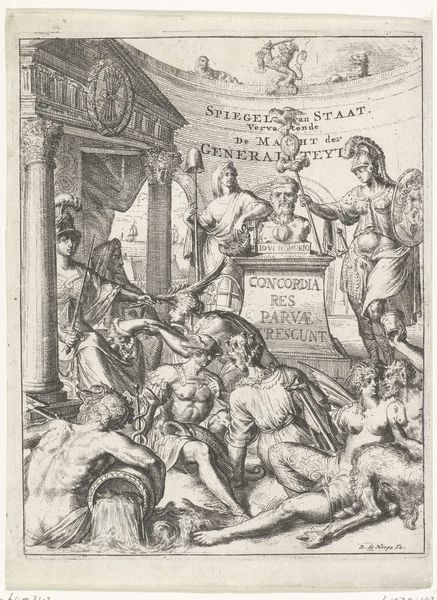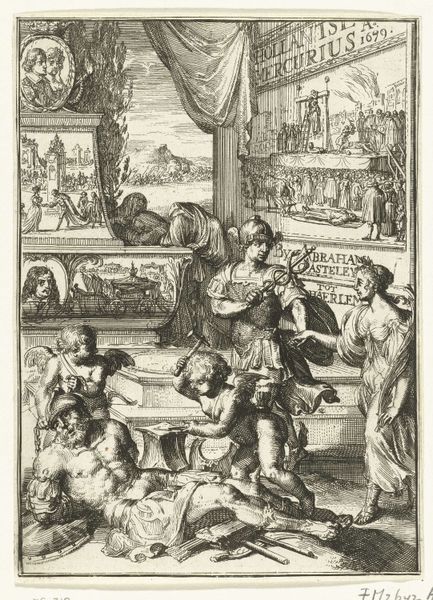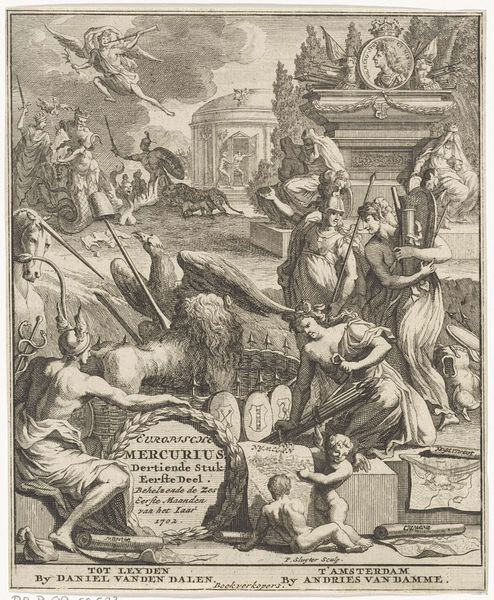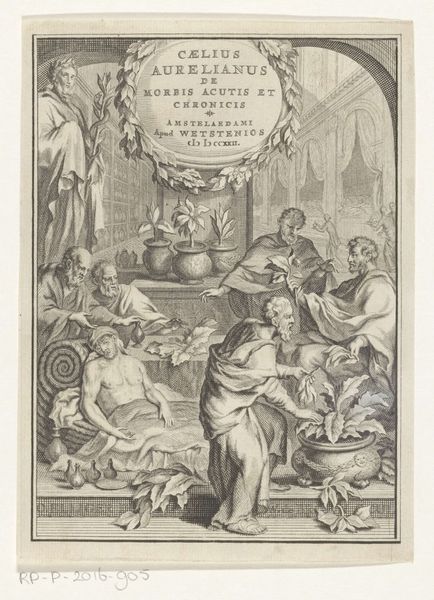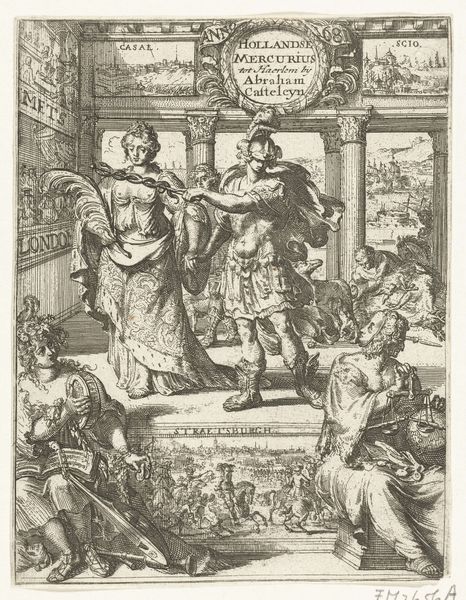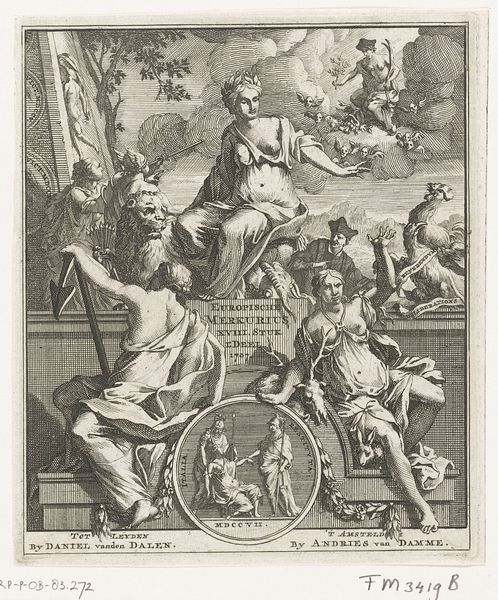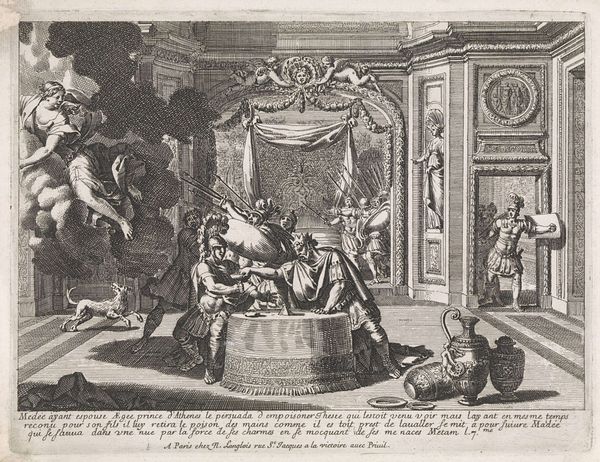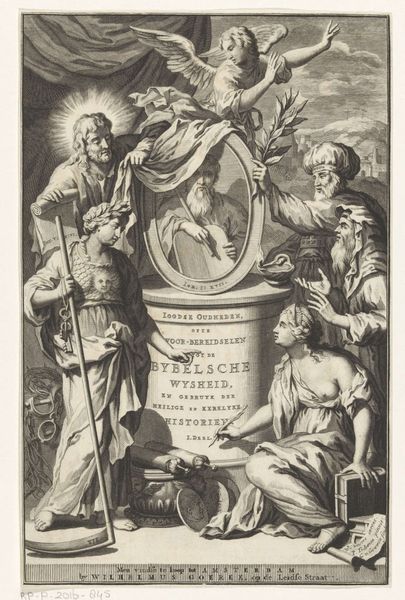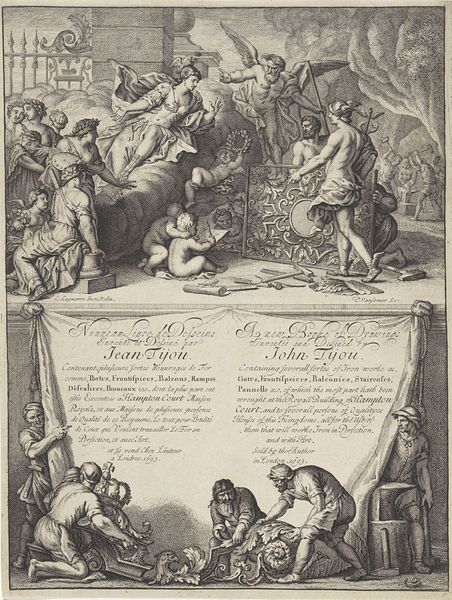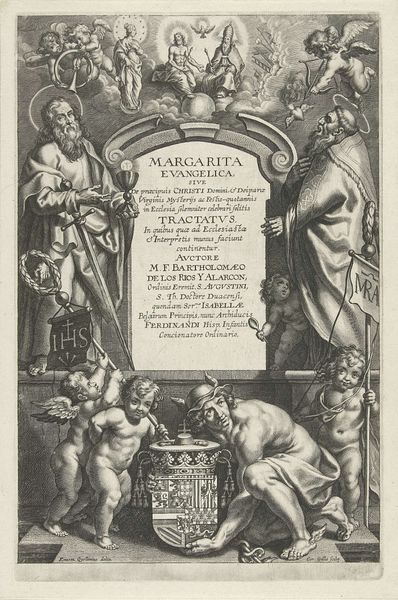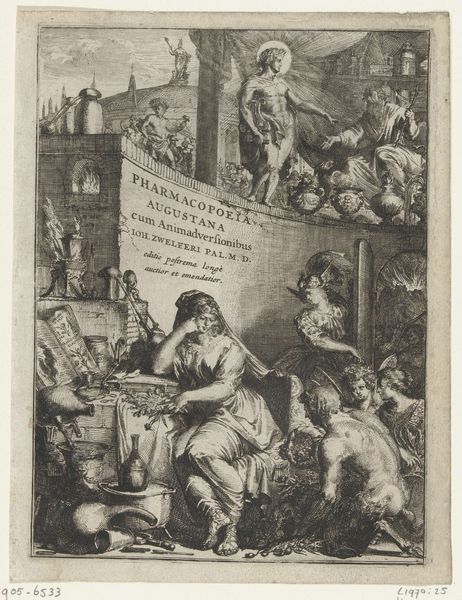
Wapen van de familie Geelvinck omgeven door allegorische figuren 1675 - 1677
0:00
0:00
print, engraving
#
allegory
#
baroque
# print
#
figuration
#
line
#
history-painting
#
engraving
Dimensions: height 179 mm, width 125 mm
Copyright: Rijks Museum: Open Domain
Editor: So, here we have Gerard de Lairesse's "Wapen van de familie Geelvinck omgeven door allegorische figuren," an engraving dating from 1675 to 1677. It's got such a busy composition. All those figures! What’s your interpretation? Curator: The “Wapen van de familie Geelvinck” is fascinating precisely because of its allegorical density. It functions as more than just a family crest; it's a commentary on the Geelvinck family’s societal role. Considering this piece through the lens of power dynamics and social expectations of the Dutch Golden Age is essential. Do you see how the central figure alludes to classical virtue? Editor: I do see what might be allusions to Classical antiquity. Curator: Consider the placement of figures—the central figure representing poetry is being honored with wealth and learning. Now, how might that play into the Geelvinck family’s role within the burgeoning capitalist society of the Netherlands at that time? Whose stories get centered in artwork such as this? Editor: Ah, so it's not just celebrating the family, but also reinforcing their status and perhaps justifying it. It almost seems propagandistic, right? The way it intertwines power, wealth and learning. Curator: Exactly. It raises questions about the artist's role, the patron's intent, and the cultural narratives being constructed and perpetuated through art. How do these choices mirror broader social structures and power imbalances that existed at the time, and do any echoes of these structures still resound today? Editor: That's something to ponder! I initially saw a decorative family crest, but it's so much more complex. Curator: Right, recognizing the symbolic language used to uphold status, while thinking critically about what other narratives might have been excluded, changes how we appreciate this work.
Comments
No comments
Be the first to comment and join the conversation on the ultimate creative platform.
